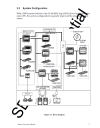Question on the 4MB RAM cartridge and games like X-Men vs. Street Fighter. After the initial load, there is virtually no loading during gameplay/different rounds, which was a major Achilles heel of memory-strapped consoles like the Playstation. I remember being hugely disappointed by the 10-second load times in Street Fighter Alpha (not only between fights, but it had to load in the win quotes separately!). I also know that some 1MB RAM cart Saturn games (like Marvel Super Heroes) actually had increased loading times between battles, in order que up the additional animation.
So what exactly did X-Men vs. Street Fighter do between battles to be able to eliminate them almost completely? Understandably, more could be cached in the memory for longer periods of time, but in the end we're still talking about (only) 6+ MB of memory available, which is still smaller than all of the game's assets. Given the luxury of the extra breathing space, did the game seamlessly stream in upcoming data while you played? As in, as Wolverine is battling Cyclops in a heated match, is the disc swapping in the art assets for Magneto and Akuma for the next fight?
Does anyone have any experience with this, and was this something that could have been better explored for other 2D heavy titles, perhaps even with only 2MB of RAM?
The Saturn was fully capable of streaming data from the disk during gameplay. It did this in games like Panzer Zwei, Panzer Dragoon Saga, and the Shenmue pre-beta video for Saturn. I'm sure there were others. On Mk 1 Saturns you actually had an access light so you could see when the drive was being accessed - particularly interesting for games where the sound was chip generated (like the two Panzer games above) and bosses etc were loading in as you flew along.
From looking at the developer docs I downloaded a bit back, it appears that the Saturn CD unit could be told to go off and preload files into its 512KB dedicated memory. The CDROM drive, its SH1 and its firmware handled this on their own when instructed by the game. Then, when requested you could DMA from this 512KB CDROM dram into either main memory or directly into the video ram. You could do this irrespective of the RAM cart.
But ... the ram cart used the same bus that the CDROM used. And this can't have been a slow bus, as the MPEG Video CD expansion unit was on this bus too, and had to transfer uncompressed video frames and audio over it. So I reckon you could tell the CDROM drive to load a file into it's CDROM RAM, then the Saturn to copy that data to an address range that was on the RAM cart. From there you could copy it to main ram or vram whenever you wanted.
I think it's almost certainly the case that the Saturn could DMA required pages of animation from the RAM cart to vram on demand, and in time for the next frame if the transfer was sufficiently small and properly timed. I think this is how the 1MB RAM cart allowed for enhanced animation.
I can see no reason you couldn't interleave transfering data to main ram / vram from the RAM cart for animation, with loading the next level / fighter's data into unused memory on the 4MB RAM cart. I think the speed and capacity would have been there, and that this is the behaviour you're seeing in games like Xmen vs SF.

Looking at a Saturn memory map I found online, I think the max size directly addressable for a cartridge was probably 32MB, but that's just me naively converting hex addresses to decimal and dividing by 1024 twice. Large sizes like this would have been ideal for arcade version of the Saturn - The Titan - that used carts.

